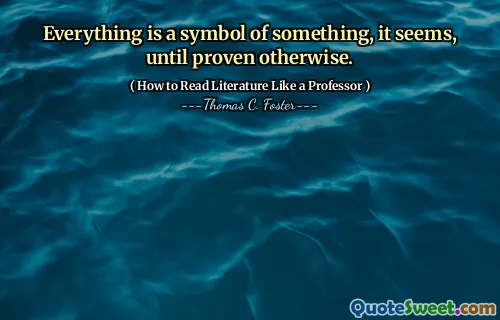
Everything is a symbol of something, it seems, until proven otherwise.
This quote touches on the fundamental nature of symbolism and perception in human understanding. It suggests that our interpretation of the world around us is initially rooted in recognizing various signs, symbols, or metaphors that carry meaning beyond their mere appearance. In literature, this idea is vividly illustrated through the way authors embed symbols that evoke emotions, ideas, and cultural values, prompting readers to look beyond surface-level details to uncover deeper significance. The process of interpreting symbols requires an openness to possibilities—accepting certain attributes as meaningful until evidence suggests a different reading. This mindset fosters an active engagement with texts and experiences, encouraging us to question assumptions and remain flexible in our interpretations. From a philosophical perspective, the quote underscores the provisional nature of understanding—nothing is definitively understood until context or evidence confirms or refutes initial perceptions. In everyday life, this principle encourages mindfulness and critical observation, reminding us that what we see or hear may only be part of a broader story or meaning, contingent upon context. Recognizing that everything functions as a symbol until proven otherwise pushes us to remain curious, observant, and willing to revise our beliefs. It also highlights the fluidity and ambiguity inherent in human communication and interpretation. Ultimately, this approach enriches our engagement with art, literature, and life itself, prompting a continual search for deeper truths and connections behind surface appearances.






